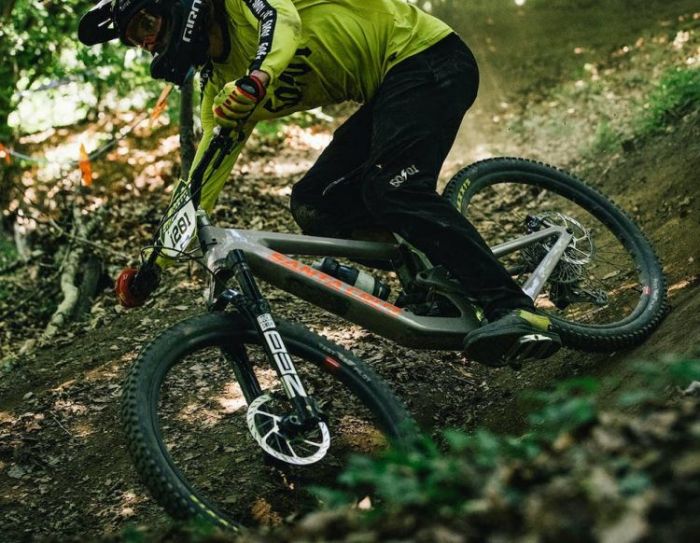Our review of the Trek Farley 9.6.
- Price: $3,699.99
- Frame: OCLV Mountain Carbon
- Gear: 1×12
- Tires: 27.5×4.50”
What we like about it: The light and unique carbon fiber frame makes the Farley 9.6 more possible, and can show its unique style in any season.
What we don’t like about it: Some people find the cables routed outside the frameless clean (I personally don’t think this has much impact).
Rating (4.6/5)
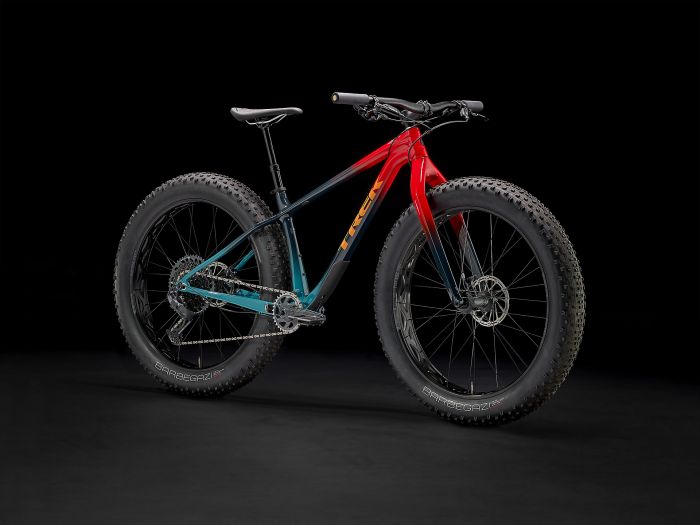
The Trek Farley series is very popular, both in terms of the manufacturing process and component configuration, and is an Internet celebrity in this price range, very sought after.
It’s hard to imagine that when we got the Trek Farley 9.6, although we were mentally prepared, it still surprised us how light it was under its heavy exterior.
The paint on the Trek Farley 9.6 is Radioactive Red to Navy to Teal Fade. The designer paints these colors on the frame, and the imaginative color mix is full of personality.
Not to mention the OCLV Mountain Carbon, which is more advanced than the aluminum frame, reduces the weight of the body, and has stronger resistance.
In addition, the Trek Farley 9.6 is also equipped with an SRAM GX Eagle drivetrain, SRAM Level TL hydraulic discs, and more. The bottom line is that the Farley 9.6 is truly the perfect companion for riders looking to train outdoors year-round and anyone who values the performance benefits of carbon fiber.
Below is our breakdown of the Trek Farley 9.6’s descending and climbing performance, key features, components, and specs. and other editions in the series. If you want to know more about the Trek Farley range, check out our review.
Learn more: Trek Farley 7 Review
Descending
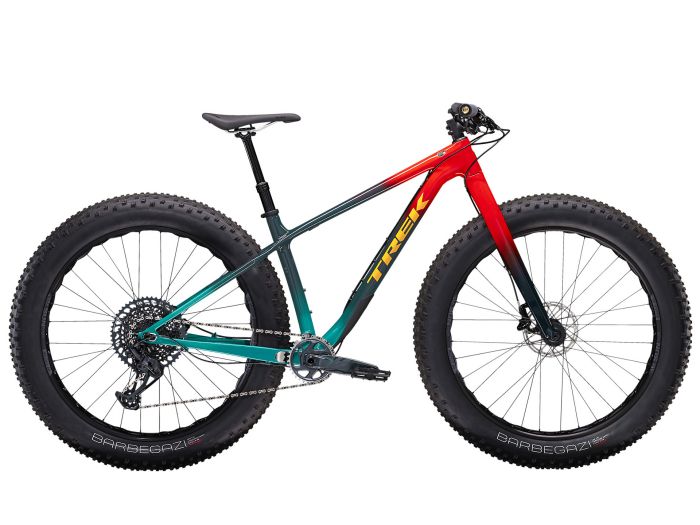
Straight to the point, the first thing we’ll notice about a mountain bike is its descending capabilities. I have to say that the Trek Farley 9.6 is really a samurai on the descent road. The bike was smooth jumping, braking gracefully through the levels we set up, and even when we took it down steep curbs, it still managed to break through with ease.
In fact, we’ve been reviewing the Trek Farley 9.6 for almost four months, and it’s safe to say we’re familiar friends with the Trek Farley 9.6.
We ran our test down a rough, soft forest trail. I have to mention that I really suffered a lot on this road, because I was wearing ordinary sneakers, so I was almost supported by my companions along the way. When I was about to start riding on the Trek Farley 9.6, I was apprehensive, but when I started pedaling, I could feel myself and the Trek Farley 9.6 sticking to the ground. The Trek Farley 9.6 fat tires also provided plenty of traction and grip in the face of sudden turns. Not only that, the OCLV carbon fiber frame absorbs more vibrations, giving me a more perfect riding experience.
In addition, there is a rocky creek about 35′ on the back half of the trail that we must pass. To be honest, I was very worried, with the impact of the water, and the rocks under the water making it difficult to control the bike, I can’t imagine what would happen.
Luckily, I got through it safely and the Trek Farley 9.6 wide, super-grip Bontrager Barbegazi TLR tires completely caught my eye.
Climbing
I once tried to climb the Alps on my bike, only to find out it was just my fantasy. However, maybe Trek Farley 9.6 will give me renewed hope.
We conduct the evaluation on the natural ring road. From the bottom up, the distance makes the legs tremble. However, in order to get a more intuitive evaluation, we still choose to ride upwards.
In fact, we didn’t find it difficult to ride long distances and we could still keep smiling. It sounds incredible, but it’s the truth. And we encountered a lot of slopes in the process of climbing, and the one that impressed me was probably a slope of about 55°. I adjusted the length of the seat tube through the dropper post, which raised the center of gravity, which saved me a lot of effort during the climb.
Of course, the Trek Farley 9.6’s Rapid Drive 108 rear hub also plays a role that cannot be ignored, and its timely acceleration characteristics give me smooth and timely power. I think this is really important for long climbs.
While I’m fine with its climbing, I have a bit of a gripe with the Trek Farley 9.6’s only one water bottle mounting hole. I didn’t have enough water to replenish my energy during the second half of the climb.
If you want to experience the magic of mountain biking, I really urge you to try the fun of climbing.
Main Feature
Frame
I once heard a radical statement that “a bicycle is nothing more than a combination of a frame and wheels, and the frame is the soul of a bicycle”, and when you think about it, it seems to be the case.
Speaking of the Trek Farley 9.6’s frame, I think even though it only has one paint option, the orderly combination of several colors gives the whole body a sense of design. Even people who are not interested in bicycles will stop and appreciate it when they see it.
If you look closely at our review, the Trek Farley 9.6 for under $3500 has an OCLV Mountain Carbon frame. Through our evaluation, we found that this OCLV Mountain Carbon material is not only stronger than aluminum, but even lighter than ordinary carbon fiber, but it has not abandoned its strength on this basis.
The data shows that under the same pressure, the damage to the OCLV Mountain Carbon is less, and it will not affect its riding at all, but it has caused a blow to the aluminum and standard carbon fiber frames. Not only that, but Trek has an associated warranty, but I don’t think you’ll need it (it’s really powerful).
In addition, the Farley 9.6 gets a neat finish by threading the shifter and cables through the frame. Some people think this wiring is a little less advanced though, but I don’t think it bothers me that much in the face of its high-quality frame.
Although the Trek Farley 9.6 is very good at this price, it has to be said that even the carbon fiber-framed Farley 9.6 is not compatible with the rear luggage rack. Understandable, but hopefully Trek can improve further at this point.
Geometry
Regardless of the type of bike, when it comes to comfort, even a novice knows to look at geometry. So next let’s take a look at the geometry of Trek Farley 9.6.
First, we focused on the Trek Farley 9.6’s steep seat tube angle (71.5°), which allows the rider to maintain a more comfortable upright ride on less technical trails. Some people may ask if it is going uphill or downhill, will this matter? The answer is of course.
But don’t worry, the adjustable horizontal dropout makes it easy to adjust the length of the chainstays, even as small as 12 mm. Don’t underestimate the 12 mm, it can effectively lower your center of gravity. It keeps you and the tires firmly on the road for stability in the face of sharp descents.
Do you think that’s all there is to it? No, the dropper is designed to keep you smiling on more terrain. In addition, we also analyzed that the Frame reach (four sizes to choose from, the longest 61.9, the shortest 60.1) is not very different, but for riders with longer arms, this distance can be a bit crowded.
The Trek Farley 9.6 steers more quickly thanks to the shorter Offset, but the steering remains solid.
Not only that, but the Trek Farley 9.6 has a unique design with an OCLV carbon downtube. When you’re climbing rocky trails with your Trek Farley 9.6, the rocks that the wheels run over can fly into the down tube and cause damage to the bike. But at this time, you don’t have to worry, the OCLV carbon fiber down tube will ensure that the bike will not be damaged.
Based on the above analysis, I hope you get the mountain bike you want.
Components and Specifications
SRAM GX Eagle 1×12 Drivetrain


The Trek Farley 9.6 has a near-perfect geometry and I think its drivetrain is way ahead of other mountain bikes in its price range.
The Trek Farley 9.6 uses an SRAM GX Eagle drivetrain, which is an upgrade from the SRAM NX Eagle. The SRAM GX Eagle’s crankset uses a lighter 7000-series aluminum alloy, but the overall weight is still a bit heavier than the X01 Eagle. This is undeniable, as the SRAM GX Eagle is better value for money, and most of the extra weight is distributed over the cranks and cassette.
I have full admiration for the SRAM GX Eagle, and the Trek Farley 9.6 with no compromises and still a wide range of speed options. When I was riding on the gravel trails in the country, I was tuning and felt like the GX’s rear derailleur would allow for smoother and crisper tuning.
I think even now, a Trek Farley 9.6 SRAM GX Eagle 1×12 drivetrain is enough. If you’re looking for a mountain bike with an SRAM GX Eagle drivetrain, I suggest you take a look at the Trek Farley 9.6.
SRAM Level TL Brakes
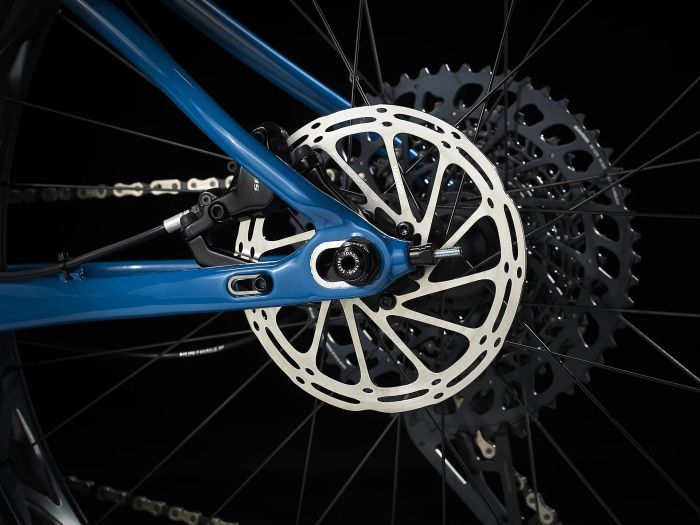
The Trek Farley 9.6’s drivetrain is affordable and durable, but the Trek Farley 9.6’s brakes are just as good. When we reviewed the Trek Farley 9.6 and encountered a sudden emergency stop on the forest trail, the SRAM Level TL brakes not only stopped in time, but barely felt any pause, which I think is perfect for this price. brake.
I’ve seen people say that the Trek Farley 9.6 is also great for snow riding, they call the Trek Farley 9.6 a snow breaker, and it makes me really want to experience it in the snow. (It’s still hot, but I’m looking forward to it in the snow)
While the Trek Farley 9.6 is light enough (28.67 lbs) to make braking easy when going fast, in unpredictable tight turns, the SRAM Level TL hydraulic disc brakes are just as helpful. If you regularly ride country trails and natural roads, or if you regularly ride on forest trails, braking is a must, and I recommend checking out the Trek Farley 9.6.
Tire
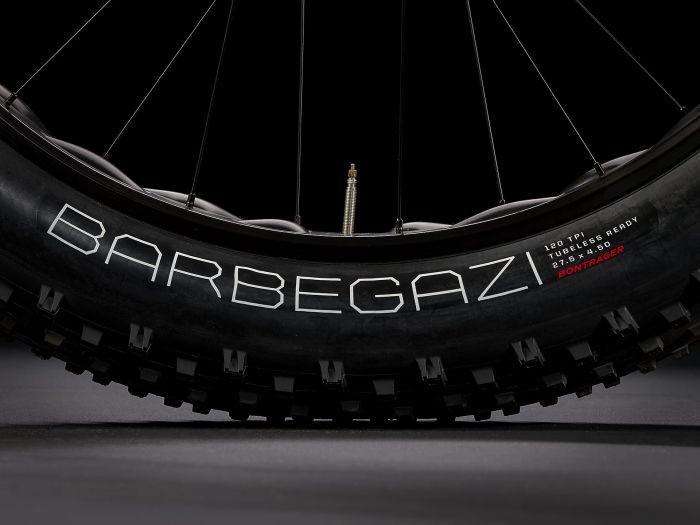
The Trek Farley 9.6’s tires are the oversized Bontrager Barbegazi Team Issue, which makes the Trek Farley 9.6 suitable for almost any road ride. The 27.5 x 4.50″ tires give the Trek Farley 9.6 a slightly bulkier overall look. However, the design of the tubeless tire allows it to reduce a lot of weight, and the design of 120 tpi makes the tire more durable.
When going downhill, we faced mounds of large and small mounds on a flowing trail without any construction. Bontrager Barbegazi TLR tires can roll over small mounds steadily, and can easily jump over large mounds. This is because the Bontrager Barbegazi TLR tires are lighter, and the Bontrager Barbegazi TLR tires can still exert their super grip on the downhill and all kinds of slippery trails. If you need a fat tire mountain bike, look no further than the Farley 9.6 and it will surprise you.
Bontrager Haru Rigid Carbon Fork
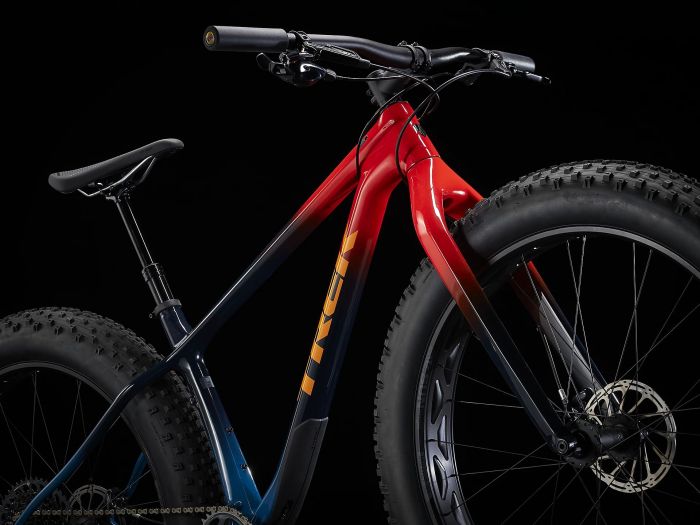
In fact, many mountain bike forks are more technical in shape than the Trek Farley 9.6 forks, and they also have good suspension. But the Trek Farley 9.6’s front fork uses rigid carbon fiber, which is not only a lighter material, but also has a good absorption capacity for bumps, allowing the rider to maintain good performance even in the face of various pits. riding experience.
And the Bontrager Haru rigid carbon fiber front fork can play an indirect speed boosting role because of the weight reduction, so this will make the speed-seeking riders prefer to choose it.
Other Versions Trek Farley
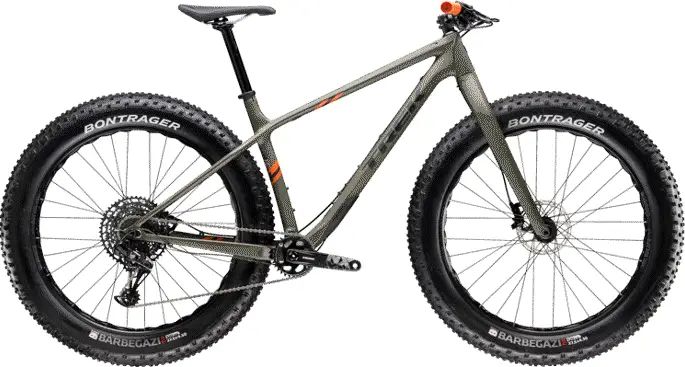
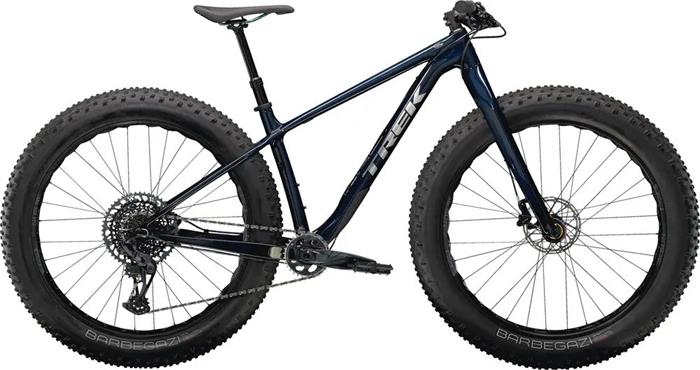
The Trek Farley series has been well received, and this 9.6 has attracted the attention of many people. As you can see, the Trek Farley 9.6 we reviewed had an SRAM GX Eagle 1×12 drivetrain, SRAM Level TL brakes, and a Bontrager Haru rigid carbon fork. It’s a well-specified bike for year-round outdoor riding, and in my opinion, it’s a great value bike with little to no issues.
In addition, Trek Farley also provides Trek Farley 5, Trek Farley and other series, the riding experience of these two is relatively good. If you want to know more specifically, you can refer to our review of other versions of Trek Farley.
Learn more:Is Trek Farley 5 Worth Buying? [Trek Farley 5 Review]
What do we like about it?
- Bumpy terrain is better accommodated by the retractable dropper post.
- The material frame of OCLV Mountain Carbon is lighter and has a good ability to absorb shock.
- The rigid carbon fiber front fork not only has a good shock absorption effect, but also has an indirect acceleration function due to its high strength and lightweight.
- Bontrager Barbegazi TLR tires make the Trek Farley 9.6 suitable for year-round outdoor riding, can handle a variety of road conditions, and maintain effective grip.
What do we not like about it?
- On flat and smooth city roads, the speed is not as good as professional city bikes. But I think this time the Trek Farley 9.6 light body will be faster than the same series on city roads.
- There are some who feel that the choice of Trek Farley 9.6 paint color is only one, too few choices.
Comparison Chart
| BIKE | PRICE | GEAR | BRAKE | TIRE | CLICK VIEW |
| Trek Farley 7 | $2849.99 | 1×12 | SRAM Level hydraulic disc | 27.5×4.50′ | CLICK VIEW |
| Salsa Mukluk CXT | $4,249 | 1×12 | SRAM G2 RS hydraulic disc | 26×4.6″ | CLICK VIEW |
| Framed Minnesota Carbon- Carbon Fork- Fat 27.5″ | $1,899.95 | 1×10 | SRAM LevelT Hydraulic disk | 27.5×4” | CLICK VIEW |
| KHS 4 SEASON 5000 | $3699((lowest)) | 1×12 | ShimanoMT420 hydraulic disc | 26×4.8” | CLICK VIEW |
Trek Farley 9.6 vs Trek Farley 7

We can clearly see from the official website that the price difference between the Trek Farley series 9.6 and 7 is about $650. I think you might be asking what the Trek Farley 9.6’s extra money is used for.
First of all, the Trek Farley 9.6 uses an OCLV carbon fiber frame that is lighter and stronger than the platinum aluminum of the Trek Farley 5. Second, the Trek Farley 9.6 is equipped with a SRAM GX Eagle 1×12 drivetrain, and while the same range of speed options as the Trek Farley 5, the GX Eagle drivetrain has been upgraded to get more push in terms of speed.
To be honest, the Trek Farley 9.6 is worth the extra money in every way, and it’s totally fitting. If you’re looking for an affordable mountain bike, you can try out Trek Farley’s various collections and choose the one that’s right for you.
Related Reading:https://bestbikeselect.com/trek-farley-7-mountain-bike-review/
Trek Farley 9.6 vs Salsa Mukluk C XT

Over the past few months, I’ve swapped bikes with my friend Tom a lot to get a taste of the Salsa Mukluk C XT. I have to say that during the exchange ride, my experience was not as good as I thought.
First off, the Salsa Mukluk C XT doesn’t have a dropper post on a nearly $4300 bike, which really baffles me, and I did feel the Salsa Mukluk C XT’s vibrations were relatively noticeable on rocky roads during the ride.
Speaking of which, I must mention Trek’s special OCLV carbon fiber technology. Trek Farley 9.6 is not only used in the overall frame, but also added this material to the down tube to prevent the impact of flying stones and provide protection.
In addition, the configuration of the dropper post can also effectively absorb shock, allowing you to have a more comfortable riding experience on gravel roads.
Learn more : Is Salsa Mukluk Deore 11 A Good Bike? [Salsa Mukluk Deore 11 Review]
Trek Farley 9.6 vs Framed Minnesota

When I first saw the Framed Minnesota Carbon-Carbon Fork-Fat 27.5″, I was really attracted by its frame, and its top tube is a little curved, which is more convenient for small people to get on and off.
But I’m not too happy with the speed range of the Framed Minnesota Carbon-Carbon Fork-Fat 27.5″ Shimano Deore 1×10, the lack of a dropper post, and I’m a little bit complaining about it. Its fat tires are good on the climb though. Nice performance.
But the Trek Farley 9.6 is relatively expensive in terms of price, but in terms of its high-quality components, it is insignificant. OCLV carbon frame, 1×12 speed range, and SRAM Level TL brakes give me a lot of fun on my rides. I myself am willing to spend a little more money to enjoy a better experience.
Trek Farley 9.6 vs KHS 4 SEASON 5000
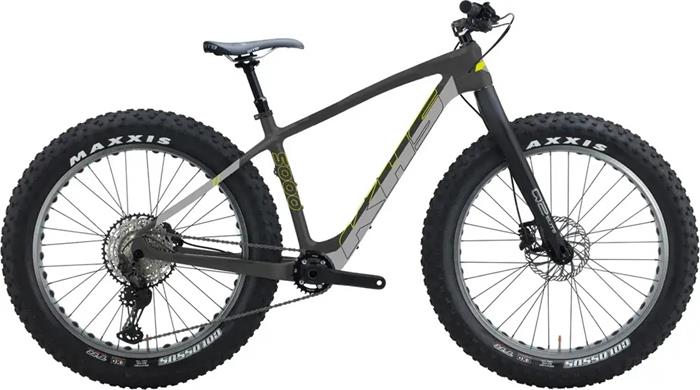
The KHS 4 SEASON 5000 is a hardtail bike that is priced at different accessory combinations starting at $3699 (with carbon fork). Shimano CS-M7100 1×12 transmission and 4.8” tire width fully reflect its climbing ability. But that also makes it less impressive on smooth roads.
Because there is no rear shock absorber, it does not have a good ability to absorb shocks when going downhill quickly. The carbon fiber frame slightly makes up for that, though.
Even so, I prefer the Trek Farley 9.6. Just talking about its frame, I’m all for it, not to mention the Trek Farley 9.6’s fork and dropper post and its tubeless tires. The combination of these components makes the Trek Farley 9.6 even more versatile, perfect for year-round outdoor riding.
All in all, I think the Trek Farley 9.6 at this price deserves a higher rating, both in terms of price and performance. If you want year-round outdoor riding, I recommend giving the Trek Farley 9.6 a try.

![[Orbea URRUN 10 20mph Review] – Best Used By People Who Enjoy Riding To Get AFeel For The Mountains!](https://bestbikeselect.com/wp-content/uploads/2023/09/2023-Orbea-URRUN-10-20mph-35_-1024x1024.jpg)
![[Specialized Turbo Como 5.0 Review] – Good Choice?](https://bestbikeselect.com/wp-content/uploads/2023/08/2023-Specialized-Turbo-Como-5.01_-1024x1024.webp)
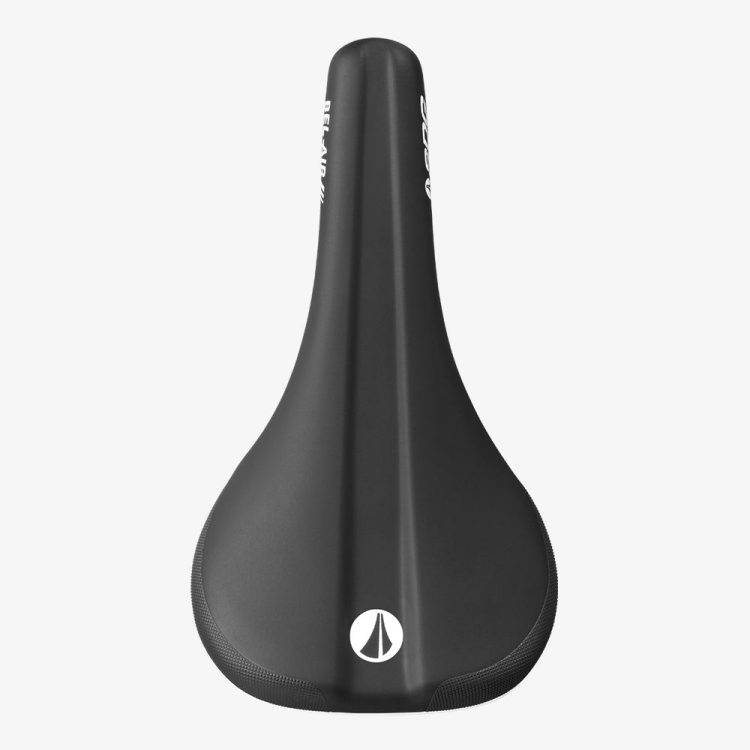
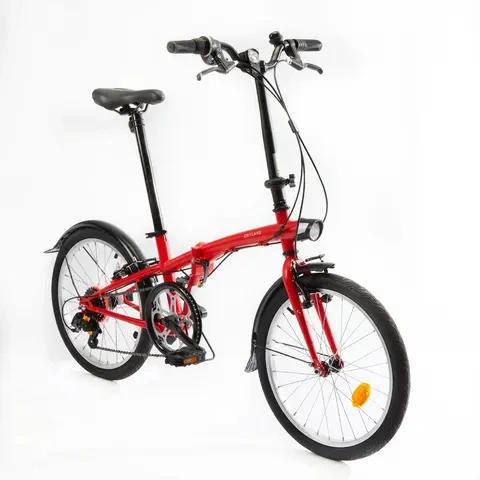

![2025 Built for Champions:[Orbea ORCA M21eTEAM PWR Review]](https://bestbikeselect.com/wp-content/uploads/2025/01/ORCA-M21eTEAM-PWR-1024x885.jpg)
![2025 Conquer Any Trail [Santa Cruz Bronson R Review]](https://bestbikeselect.com/wp-content/uploads/2025/01/Santa-Cruz-Bronson-R-1-1024x768.webp)
![2025 The All-Terrain Beast [Santa Cruz Hightower 3 MY24 Review]](https://bestbikeselect.com/wp-content/uploads/2025/01/Santa-Cruz-Hightower-3-MY24-1024x768.webp)
![The Best Comfortable Leisure Bike of 2025 [ Trek Verve 2 Lowstep Gen 5 ]](https://bestbikeselect.com/wp-content/uploads/2024/12/Verve-2-Lowstep-Gen-5-02-1024x681.png)
![2025’s Top Endurance Bikes [Cannondale Synapse Carbon 3 L Review]](https://bestbikeselect.com/wp-content/uploads/2025/01/Cannondale-Synapse-Carbon-3-L-1-1024x627.webp)
